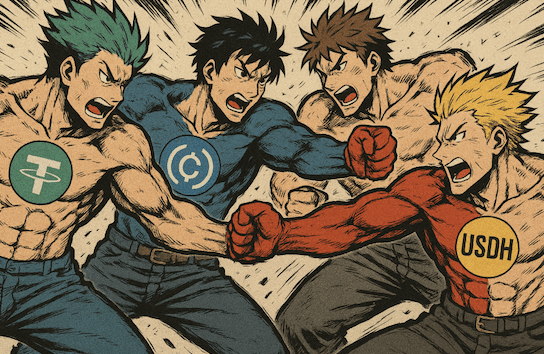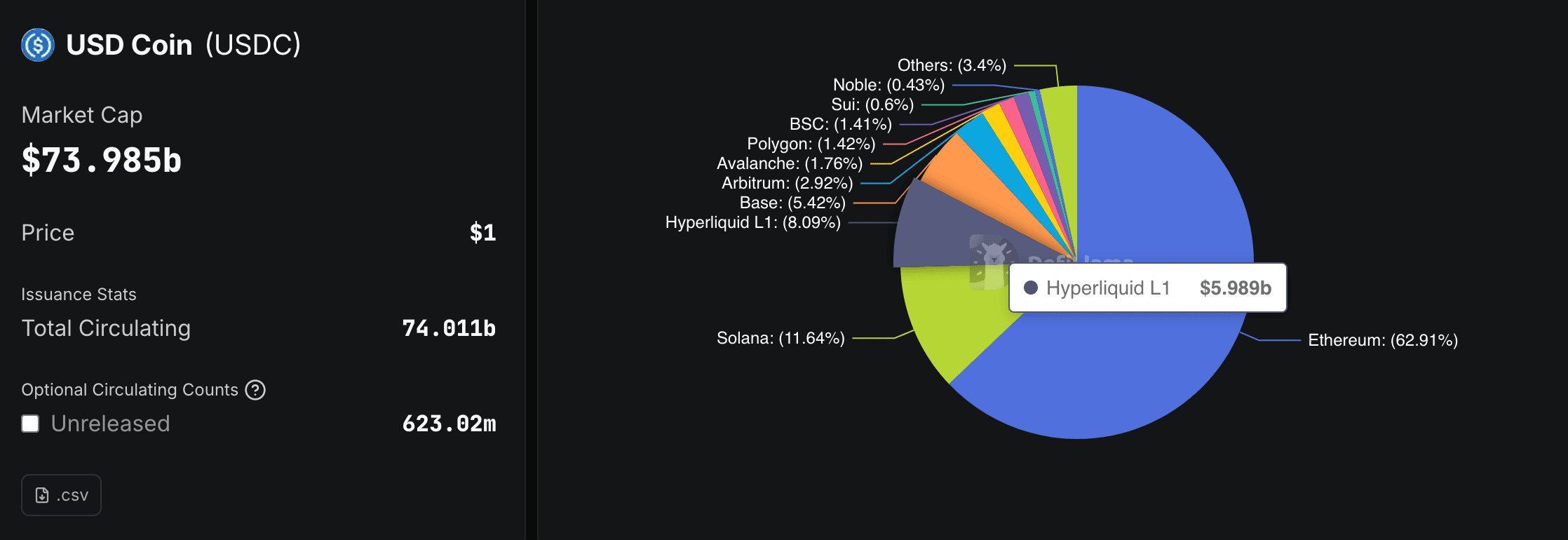
JPMorgan stated that Circle's stablecoin USDC is facing strong challenges from Tether, Hyperliquid, as well as fintech companies like Robinhood and Revolut. Analysts believe that with the new stablecoin legislation in the United States coming into effect, the market continues to expand, but if the overall cryptocurrency market value does not grow significantly, this 'stablecoin war' may turn into a 'zero-sum game.'
Tether has launched USA₮, targeting the US compliant market
According to reports, JPMorgan indicated that Tether's plan to launch a new stablecoin USA₮ is different from the existing USDT, as the design of USA₮ will fully comply with the US stablecoin legislation (GENIUS Act). In contrast, USDT's fund reserves and compliance practices are only about 80% compliant with (GENIUS Act) standards.
Moreover, the reserves of USA₮ will be issued by Anchorage Digital Bank, with Cantor Fitzgerald responsible for reserve custody, enhancing trust among large institutions and reducing reliance on traditional commercial banks.
Tether plans to personally manage this reserve to avoid a repeat of the funding risks Circle faced in 2023 due to the collapse of Silicon Valley Bank, while also lowering operational costs. More importantly, the interest income generated from the USA₮ reserves can be fully absorbed internally, bringing more interest income to the company and increasing overall profits.
(Tether launches US-regulated stablecoin 'USAT', appoints Bo Hines as CEO)
Hyperliquid aims to reduce reliance on USDC by spontaneously launching USDH to gain market share
JPMorgan stated that the decentralized perpetual contract exchange Hyperliquid is also preparing to issue its own stablecoin USDH to gradually reduce reliance on USDC. According to DeFiLlama, the USDC on Hyperliquid is approximately 5.989 billion USD, accounting for 8.09% of the total USDC issuance.
It has also become the third largest on-chain distribution location for USDC, with a market value close to 6 billion USD, second only to Ethereum and Solana. This reflects the key point mentioned by JPMorgan:
"If Hyperliquid launches its own stablecoin USDH, it could directly impact the usage and market share of USDC."

(Native Markets secures issuance rights for Hyperliquid stablecoin USDH, with assistance from Stripe and Bridge)
Robinhood and Revolut advance into stablecoins, and Circle pushes Arc to solidify its position
JPMorgan stated that, in addition to Tether and Hyperliquid, it is rumored that fintech companies like Robinhood and Revolut are also developing their own stablecoins, intensifying the competition in the US stablecoin market.
In the face of challenges, Circle is advancing a dedicated blockchain project called Arc, emphasizing speed, security, and cross-chain interoperability, attempting to solidify USDC's core position in the crypto ecosystem.
(Arc Public White Paper! Circle launches a new blockchain network specifically designed for stablecoin finance)
If the market size does not expand, the competition for stablecoins will turn into a zero-sum game
JPMorgan analyst Nikolaos Panigirtzoglou pointed out in a report that the supply of stablecoins is highly correlated with the overall cryptocurrency market value. According to CoinGecko data, the global stablecoin market value is currently about 296.3 billion USD, but the proportion of the overall cryptocurrency market value has remained below 8% since 2020.
This means that, assuming the overall crypto market does not grow significantly, the competition results among new entrants will likely be a zero-sum game of 'one side profits, one side loses,' making it difficult for the overall market value to grow in sync.
This article discusses JPMorgan: The crypto market scale is not expanding, and a zero-sum game for stablecoins might emerge, first appearing in Chain News ABMedia.


